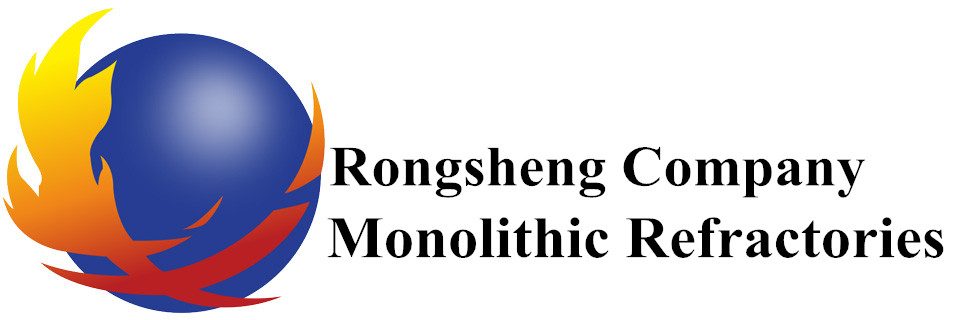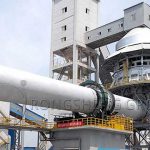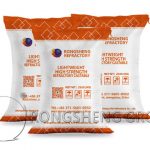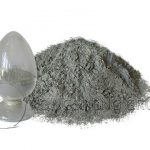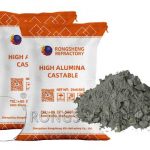The monolithic refractories are the mixture composed of refractory aggregate and powder, binder or other admixtures in a certain proportion, and can be used directly after mixing with appropriate liquid. Refractory aggregate generally refers to particles with a particle size (ie, particle size) greater than 0.088mm. It is the main material in the structure of unshaped refractory materials, which plays the role of skeleton, determines its physical mechanics and high-temperature performance, and is also the main basis for determining material properties and the scope of application. To understand the relationship between the properties of monolithic refractories, we need to explain the structure and properties of monolithic refractories firstly.
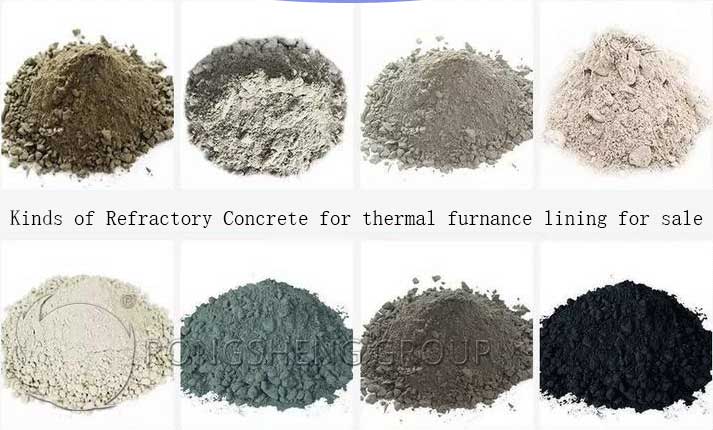
Structural Composition of Unshaped Refractories
The refractory powder is also called fine powder, generally refers to particles with a particle size equal to or less than 0.088mm. It is the matrix material in the unshaped refractory structure. Generally, it plays the role of bonding or cementing refractory aggregates at high temperatures to obtain high-temperature physical mechanics and performance. The fine powder can fill the pores of refractory aggregates, and can also impart or improve the workability of the mixture and increase the density of the material. The fine powder grade should generally be higher than the refractory aggregate. When the particle size of the fine powder is less than 5, it is called superfine powder.
Binder is a material that can cement refractory aggregate and powder to show a certain strength. It is an important part of unshaped refractory materials, which can be used in inorganic, organic, and composite materials. The main varieties are cement, water glass, phosphoric acid, sol, resin, soft clay, and some ultra-fine powders. Additives are materials that strengthen the role of the binding agent and improve the performance of the matrix phase. It is a material other than the basic components of refractory aggregate, refractory powder, and binder, so it is called admixture. There are many kinds of admixtures, including coagulant, dispersant, water reducing agent, inhibitor, early strength agent, and expansion agent.
There are many types of monolithic refractories, and there are various classification methods. The national standard “Classification of Monolithic Refractories” classifies monolithic refractories as follows.
- (1) According to the apparent porosity, it can be divided into two categories: dense materials and thermal insulation materials. The true porosity of the thermal insulation material is not less than 45%.
- (2) Classified by the main chemical composition (mineral composition) of the entire mixture and/or the aggregate properties that determine the characteristics of the mixture.
- (3) According to the combination form, it can be divided into ceramic bonding (T), hydraulic bonding (S), chemical bonding (H), and organic bonding (Y).
- (4) According to the construction method, it can be divided into refractory castables, refractory ramming materials, refractory plastics, refractory press-in materials, refractory spray coatings, refractory slurries, refractory coatings, etc.
The Performance of Monolithic Refractories
- The preparation process is simple, the production cycle is short, and the productivity is high.
- Strong adaptability. It is not restricted by the structure and shape of the industrial kiln when in use and can be made into any shape.
- Good integrity, good airtightness, and large thermal resistance. It can reduce the heat loss of industrial furnaces and save energy.
- It is convenient for mechanized construction, saving labor and time.
- It is easy to repair the damaged lining of the industrial furnace with unshaped refractory materials. Extend the service life of the lining body and reduce the consumption of refractory materials.
The Relationship Between the Properties of Monolithic Refractories
The performance of unshaped refractories should ensure that the kiln and thermal equipment can operate normally under the effects of high temperature, physics, and machinery, with less damage and longer service life. Its performance is divided into chemical mineral composition, organizational structure, mechanics, heat, use performance, and construction performance.
The chemical mineral composition of the material is the basis of all properties and is also affected by factors such as production technology and use conditions. The porosity, bulk density, true density, and strength measured at room temperature can control the quality of materials and predict usage at high temperatures. The properties of refractoriness, load softening temperature, and slag resistance measured at a high temperature can reflect the state of the material at high temperature and the relationship between external effects and are also the basis for determining the scope of use of the material.
Construction work performance is the prerequisite to ensure the realization of various properties of unshaped refractory materials, and it also directly affects its use effect.
It should be said that there is a certain relationship between the properties of materials, such as large bulk density, high thermal conductivity, high porosity, poor slag resistance, and low thermal conductivity. Therefore, the quality and scope of use of the material should be comprehensively evaluated based on the overall performance of the material. At the same time, some basic properties of the material should be strengthened in order to better adapt to the requirements of the conditions of use.
